|
K.C.S.E Biology Q & A - MODEL 1999PP1QN17
Explain how the various activities of man have caused pollution of air.
answers
0 Comments
K.C.S.E Biology Q & A - MODEL 1999PP1QN16
Describe the:
a) Process of inhalation in mammals. b) Mechanisms of opening and closing of stomata in plants.
answers
a) Muscles of diaphragm contract; causing the diaphragm to flatten (from dome position. The external intercostals muscles contract internal intercostals muscles relax pulling the ribcage upward/forward and outward in man. These movements increases the volume of the thoracic cavity; reducing the pressure; of the thoracic cavity; compared to atmospheric pressure; this causes the atmospheric air to rush into the lungs. (Through the nostrils, trachea bronchioles and alveoli).
b) Theory- photosynthesis Guard cells have chloroplasts; in the presence of light; photosynthesis occurs in guard cells, producing sugar in guard cells; osmotic pressure increases/osmotic potential lowers; water from neighboring /adjacent cells enter into guard cells; causing turgidity of guard cells; causing turgidity of guard cells. Theory 1. Guard cells have chloplasts; in the presence of light photosynthesis occur in the guard cells of stomata; producing in the guard cells; osmotic pressure increases/lowers osmotic potential water from the neighboring /adjacent cells, enter into guard cells; causing turgidity of guard cells The inner walls of the guard cells are thicker than outer walls; so during turgidity the inner walls stretch more; causing the guard cells to bulge outward; stomata opens. Theory 2. Guard cells have chloroplasts (Day) in light; photosynthesis occurs in the leaf/guard cells lowering the CO2 concentrations; this increases PH/alkalinity which triggers of enzymatic conversion of starch to sugar (glucose); leading to low osmotic potential/ increased osmotic pressure in guard cells; guard cells absorb water from epidermal cells; thus becoming turgid; the inner walls are thicker than the outer walls; outer walls stench more than inner walls; causing guard cells to bulge outwards, stomata opens; In the absence of light (night); no photosynthesis; CO2 concentration increases due to respiration; PH lowered/ acidity increases; sugar converted to starch; osmotic pressure lowered/ osmotic potential increases; guard cells lose water to adjacent epidermal cell becoming flaccid; stomata close. Day low H+ high PH opens stomata. Starch glucose. Theory 3 Guard cells have chloroplasts; in light AT produced; the energy drives K+ irons from adjacent epidermal cells into guard cells; accumulation of K+ raises osmotic pressure (lower osmotic potential) of guard cells; guard cells absorbs water from adjacent epidermal cells; becoming turgid; the inner walls are thicker than the outer walls so outer walls stretch more than inner walls causing guard cells to bulge outward. Stomata opens. In the absence of light (night ) ATP rapidly decreases; no energy of potassium +ions pump ion; migrate by diffusion from guard cells to adjacent epidermal cells; become flaccid; the thinner outer walls of guard cells shrink K.C.S.E Biology Q & A - MODEL 1999PP1QN15
An experiment was carried out to investigate haemolysis of human red blood cells. The red blood cells were placed in different concentrations of sodium chloride solution. The percentage of haemolysed cells was determined. The results were as shown in the table below.
a) i) On the grid provided, plot a graph of harmolysed red blood cells against salt concentration.
ii) at what concentration of salt solution was the proportion of haemolysed cells equal to non-haemolysed cells? iii) State the percentage of cells haemolysed at salt concentration of 0.45% b) Account for the results obtained at: i) 0.33 percent salt concentration. ii) 0.48 percent salt concentration. c) What would happen to the red blood cells if they were placed in 0.50 percent salt solution? d) Explain what would happen to onion epidermal cells if they were placed in distilled water.
answers
a) (i)0.403; 0.404; + 0.002
ii) 0.402; iii) 9-10-11% b) Account for the results obtained at: (i) 0.33 percent salt concentration. Less concentration /hypotonic / dilute than blood cells cytoplasm/ red blood cells; water is drawn in by osmosis the cells swells and eventually burst. (ii)0.48 (ii)0.48 percent salt concentration. Concentration of cytoplasm same as concentration of salt solution/isotonic; therefore no net movement of water; hence no heomolysis. c)Percentage of cells haemolysed would still be zero? Becomes turgid; but does not burst; due to the cell wall. d)The cells would absorb water due to osmosis, swell and become turgid. The cell sap move conc. than surrounding water gate into the cell by osmosis; the cell swells/becomes turgid; but does not burst due to the cell wall K.C.S.E Biology Q & A - MODEL 1999PP1QN14
The photograph below represents a blood smear obtained from a person suffering from a certain disease.
a) Name the structure labeled X.
b) i) Name the structure labeled L ii) State the function of the source labeled M c) What disease was the person suffering from? d) List three ways by which micro-organisms enter the human body.
answers
a) Trypanosome
b) i) Locomotion ii) c) Sleeping sickness/trypanosomiasis d) -Orally ingested including boring through bites Sexually; cuts and wounds (contaminated) needles syringes/surgical instruments; contaminated blood transfusion.
K.C.S.E Biology Q & A - MODEL 1999PP1QN13b
Describe how population of grasshoppers in a given area can be estimated.
answers
Use the capture and recapture methods; Catch the grasshoppers count and mark using permanent ink; record and release; and allow time 1 to 2 hours; recapture and count the marked and the unmarked; total population is equal to the number of marked and unmarked grasshoppers in the second sample multiplied by number marked grasshoppers in the first sample; divided by the number of grasshoppers marked in the second sample that were recaptured.
K.C.S.E Biology Q & A - MODEL 1999PP1QN13a
Distinguish between a community and population.
answers
K.C.S.E Biology Q & A - MODEL 1999PP1QN12
A student set up an experiment as shown in the diagram below..
a) i) What is being investigated in the experiment?
ii) On the diagram below indicate the expected results after three days.
iii) Why was it necessary to have wet cotton wool in the containe?
b) What is the role of the following to a germinating seed/ i) Oxygen ii) Cotyledons.
answers
.a) i) Region of elongation (rapid) growth in a root.
b) i) Oxygen
Oxidation of stored food; to provide energy (for germination) ii) Cotyledons Store food necessary for germination; protecting the plumule. K.C.S.E Biology Q & A - MODEL 1999PP1QN11
Give reasons for each of the following:
a) Constant body temperature is maintained in mammals. b) Low blood sugar level is harmful to the body.
answers
a) Most enzymes in the body function within a narrow range of temperature;
High temperature denature enzymes Low temperature inactive /inhabit enzymes b) Sugar in a raw material for respiration, hence less energy, available to body/low/rate of metabolism. K.C.S.E Biology Q & A - MODEL 1999PP1QN10
Below is a list of organisms, which belong to classes Insecta, Myriapoda and Archnida: Tick, centipede, praying mantis, tsetse fly, millipede and spider. Place the organisms in their respective classes in the table below.
Give reason in each case. K.C.S.E Biology Q & A - MODEL 1999PP1QN09
The diagram below shows surface view of a human brain.
a)Name the parts labeled B and C.
b) State three functions of the part labelled A c) State what would happen if the part labeled B was damaged.
answers
a) B- Cerebellum
C- Medulla Oblongata ; Acc Oblongata alone b) Control locomotion motor area/sends impulse to affectors/controls
K.C.S.E Biology Q & A - MODEL 1999PP1QN08
State two disadvantages of self-pollination.
answers
K.C.S.E Biology Q & A - MODEL 1999PP1QN07
An investigation plants with red flowers were crossed with plants with white flowers.
All the plants in the F1 generation had pink flowers. a) Give a reason for the appearance of pink flowers in the F1 generation. b) If the plants the F1 generation were selfed, state the phenotypic ratio of the F2 generation.
answers
a) Co dominance
Acc; partial/incomplete/equal b) 1 red flower 2 pink flowers 1 white flower Acc 1:2:1 State three ways by which plants compensate for lack of ability to move from one place to another.15/6/2020
K.C.S.E Biology Q & A - MODEL 1999PP1QN06
State three ways by which plants compensate for lack of ability to move from one place to another.
answers
K.C.S.E Biology Q & A - MODEL 1999PP1QN05
Suggest tree reasons why green plants are included in a fish aquararium.
answers
K.C.S.E Biology Q & A - MODEL 1999PP1QN04
State two advantages of natural selection to organisms
answers
K.C.S.E Biology Q & A - MODEL 1999PP1QN03
Explain why sexual reproduction is important in organisms
answers
K.C.S.E Biology Q & A - MODEL 1999PP1QN02
Give two reasons why accumulation of lactic acid during vigorous exercise leads to an increase in heartbeat.
answers
K.C.S.E Biology Q & A - MODEL 1999PP1QN01
Name two processes that bring about the translocation of manufactured food
answers
|
Archives
December 2024
Categories
All
TOPICSFORM 1
Form 2
Form 3
Form 4
|
Can't find what you are looking for? Don't worry, Use the Search Box Below.
|
Primary Resources
College Resources
|
Secondary Resources
|
Contact Us
Manyam Franchise
P.O Box 1189 - 40200 Kisii Tel: 0728 450 424 Tel: 0738 619 279 E-mail - sales@manyamfranchise.com |


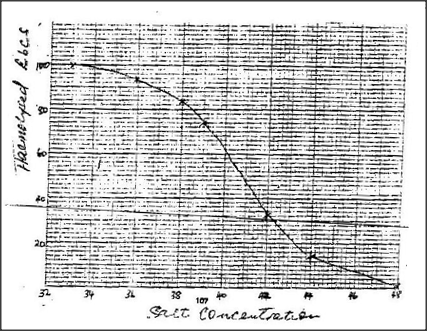
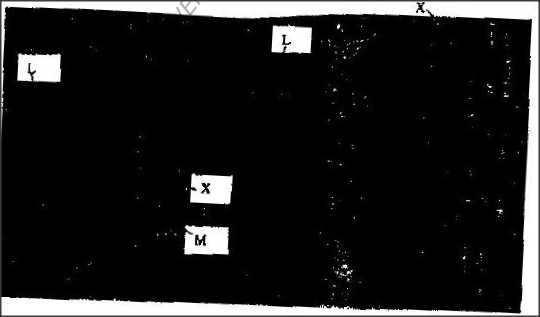
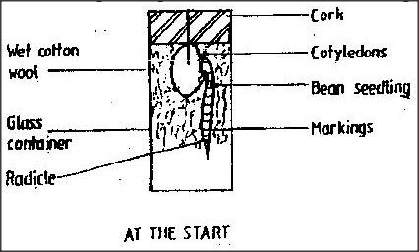
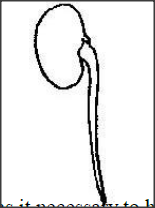
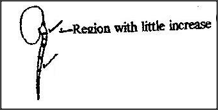


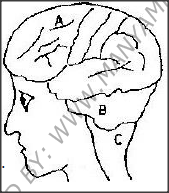







 RSS Feed
RSS Feed

